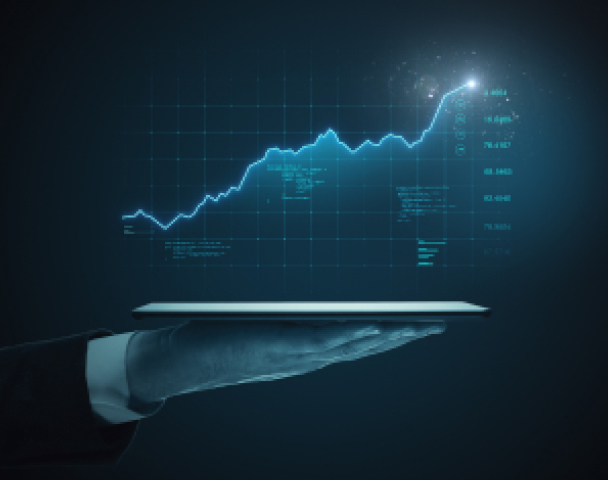IoT Trends in 2021: More Accessible, Secure, and User-Oriented IoT
IoT will certainly play a big role in how companies will reshape their operations as well as their go-to-market strategies in 2021. On the technology side, IoT solution vendors will empower users with greater capabilities for their business use cases. Among the key improvements expected to be introduced by technology vendors are tools for rapid IoT development, richer and more flexible IoT dashboards, new security paradigms that include Blockchain, and deeper use of IoT analytics.
As a general trend, the IoT industry in 2021 will continue to mature and offer more exciting innovations for consumers and businesses. We are going to see growing trust in device-to-device communications and wider use of financial transactions executed by IoT-powered devices. Security and data privacy will be further advanced in both technological and legislative domains. Secure, reliable data will provide more capacity for IoT analytics and personalized user experiences. As the post-crisis global economy bounces back to its feet, IoT will set the ground for a more intelligent future for all of us.
Among numerous IoT trends for 2021, we’d like to specifically emphasize those that are going to empower economic growth and remove obstacles for full-on digital transformation.
Enabling IoT Developers to Do More
In order for IoT developers to create new solutions at a faster pace, IoT platform vendors are set to offer even more powerful development tools and capabilities. These tools will address every aspect of the IoT solutions lifecycle, including flexible user management, enterprise-grade security, and advanced data analytics. IoT entry barriers will grow thinner as most essential device management will be done via graphical UIs and, thus, become accessible even for non-technical people.
In addition to flexible development functionality, IoT platform vendors will also focus more on embedding use case specific solutions and ready-to-go IoT dashboards into their offerings. This approach will help users have some good examples to get started with, or even build their projects entirely on those premade dashboards.
Also, there’s an integration issue within the IoT ecosystems that consist of several companies using different technology stacks, security standards, and data access policies. Since there’s no single approach to ensuring IoT data security, such integrations can create additional vulnerabilities for all parties, thus undermining trust in large-scale IoT projects.
Blending Into Enterprise Ecosystems
As IoT matures and becomes a keystone technology for business efficiency, it will grow into a core expertise for numerous companies from all sides of the economy. Manufacturers will use IoT as part of their products while service providers will offer new consumer services based on the growing variety of IoT data. Some companies will go further and become full-scale IoT technology providers in addition to their traditional lines of business.
IoT technology will also become more enterprise-grade in terms of security, user access management, and customization options. IoT platforms will address the needs of enterprise users for maximum adaptability to any business context and will provide lots of convenient features out of the box. This will help IoT platform vendors make an increasingly stronger value proposition against hard-wired device management dashboards and IoT solutions built from scratch.
Driving Efficiency and Autonomy
In the wake of the recent disruption brought on the traditional workplace environment by Covid, companies are now set to optimize their production and office facilities to ensure a greater degree of autonomous work. Their effort spans from smart building applications, which are estimated to be the most popular IoT use case in 2021, to complex industry 4.0 projects. The beauty of IoT is that it can be useful at any scale and within any working environment.
Efficient energy use will remain a big priority for all companies, and that’s where IoT gives particularly good ROI. Smart energy meters, smart lighting, and remote climate control applications can provide savings on a daily basis. In more advanced use cases, IoT will usher in new ways to manage goods delivery, control manufacturing processes, and automate field services via mass scale adoption of remote sensing and predictive analytics.
Taking a Deep Dive into Data Analytics
Data analytics applications will continue to be a pivotal part of IoT adoption. Businesses that have successfully achieved their initial IoT milestone, which is usually connecting and managing their smart devices via the cloud, will dive deeper into device data analytics. Growing amounts, complexity, and variety of data will reinforce the need for advanced analytics as part and parcel of any IoT platform or custom-built IoT solution.
In parallel with close integration between IoT and analytics domains, companies will have to take care of new data-driven workflows, automation pipelines, and decision making processes. This is because excessive amounts of IoT device data will no longer tolerate a great deal of outdated and inefficient manual processes. Companies will need to consider implementation of modern DataOps practices, set up automation rules and alerts for critical events within their IoT ecosystems, unlock the power of device-to-device communication, and establish streamlined workflows that rely on information coming from smart devices in real time.
Introducing a New IoT Security Paradigm with Blockchain
For years, security has been a major roadblock for IoT adoption in the enterprise sector. Numerous vulnerabilities found in smart devices have seriously undermined their potential in the eyes of corporate stakeholders, and have prevented more investment in large IoT solutions and ecosystems. Until IoT data can be fully trusted, a vision of smart devices freely exchanging sensitive data, running financial transactions, or executing mission-critical workloads cannot really be brought to life.
That’s why companies are now turning to Blockchain as a solution to safeguard IoT data and resolve trust issues in multi-party IoT ecosystems. Blockchain achieves this by providing a distributed digital ledger stored on multiple cloud servers, where every data transaction is verified, registered, and processed according to predefined rules. As a result, data put on a Blockchain cannot be tampered with or modified by any single party involved, or by a malicious external actor. Blockchain has been already widely utilized together with IoT and we expect this trend to accelerate in 2021.
Becoming a New Normal for Consumer Electronics
On the consumer side, the demand for smart electronics will grow, and vendors will have to get more creative. It will be absolutely essential for consumers that when they buy a device it comes with a smartphone application to monitor and control its functions. Whether it’s a lighting bulb, a coffee machine, or a lawn mower, it has to be connected and smart.
One specific aspect of device intelligence, which will most certainly be on the forefront of IoT innovations in 2021, is self-learning capabilities. More than just support of personalized user settings, it will take advantage of IoT analytics, machine learning, computer vision, sensors, and other technologies to superimpose its historical data with its current operational context and enable devices to take “thoughtful” actions. Consider a robot vacuum cleaner that figures it out when it’s time to clean your house - or just a particular room - all by itself.
Making a Stronger Financial Case
Alongside security concerns, businesses often name low financial gains as a major obstacle for IoT adoption. However, the situation is steadily improving and the scope of IoT use cases with good ROI grows wider. Data collected from IoT devices opens up even more valuable opportunities in optimizing performance and delivering better customer experiences.
What also contributes to stronger financial results is more cost-efficient and powerful IoT technologies, specifically IoT platforms. The best platforms for IoT development are now capable of addressing an end-to-end use case practically out of the box, including advanced IoT analytics, user access management, and brand customization. These capabilities allow companies to invest less time and effort into custom development and significantly reduce entry barriers for those new to IoT.
How Kaa Embraces New IoT Trends in 2021
The Kaa Team has been working diligently to address the above-mentioned trends in our Kaa products. The latest version of the Kaa IoT Platform sets a new standard for being both powerful and user-friendly, and accessible even for non-technical people. With the seamless integration between Kaa and Open Distro, Kaa users can now tackle practically any IoT project and reap all the benefits of comprehensive device data analytics.
Another recent advantage of Kaa is a set of business-ready IoT dashboards that we added as standard to help our users handle popular IoT use cases even more effectively.
You can see what Kaa has to offer for yourself by signing up for a no-obligation user account, which will give you full access to all the Kaa features and our prebuilt IoT dashboards. Get started today!
Related Stories
- IoT Trends
Top IoT industries, use cases, and trends
In every sector of the economy, companies embrace IoT technology to curb costs, create new value, and modernize their product...
- IoT Trends
5 global IoT trends to follow in 2017
With a vast number of large and small companies rooting their operations in the IoT technology, the year 2017 promises to add...



